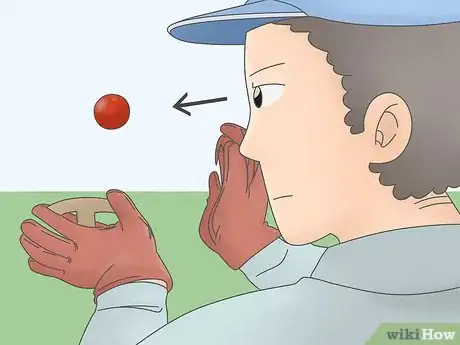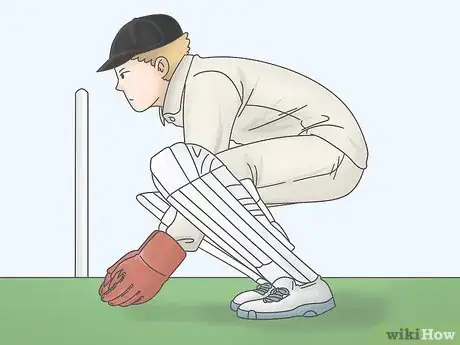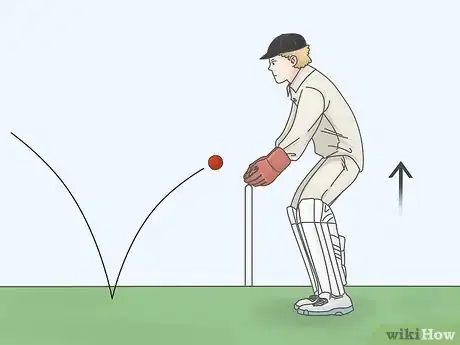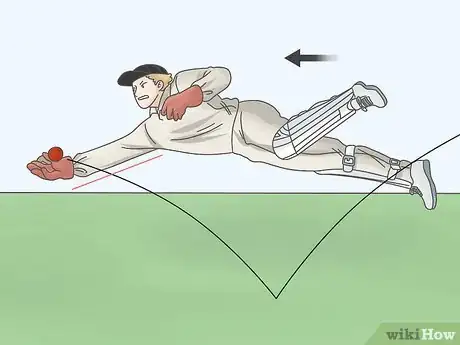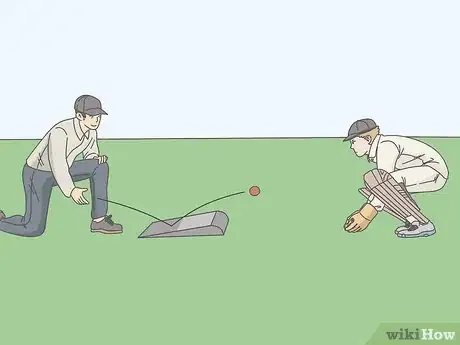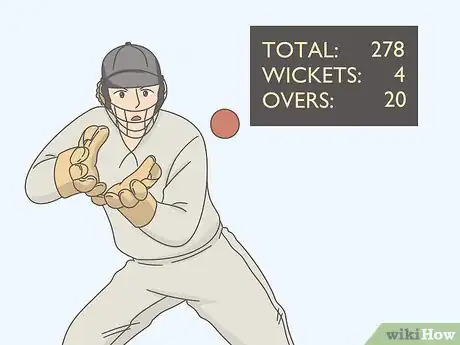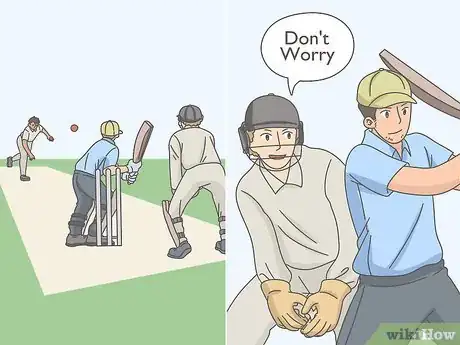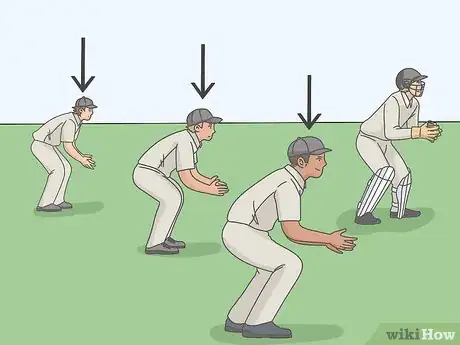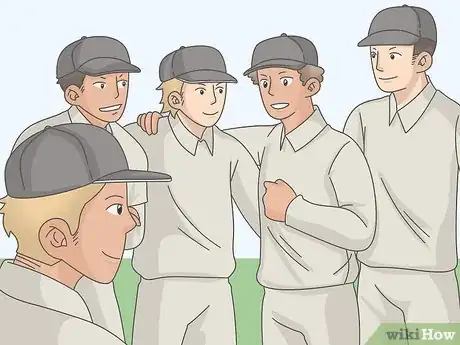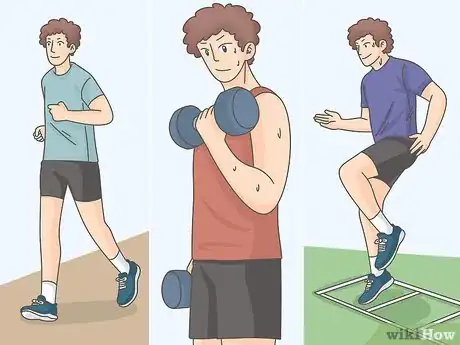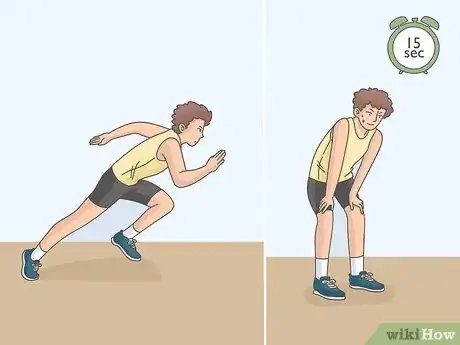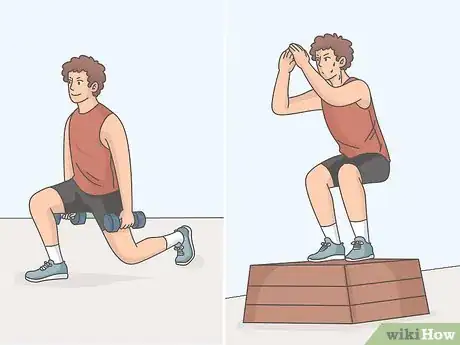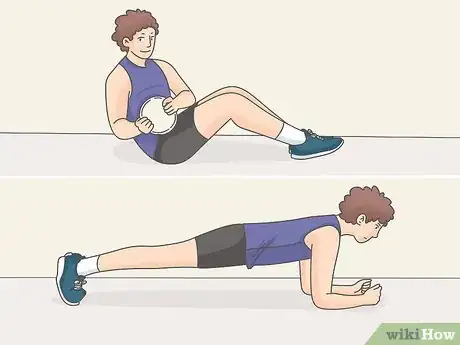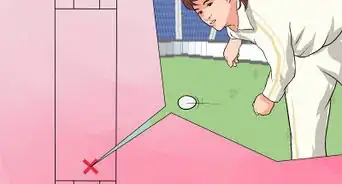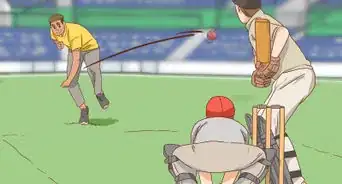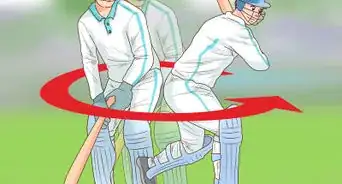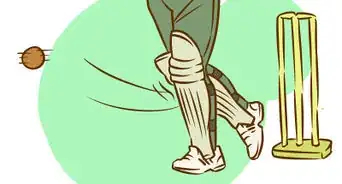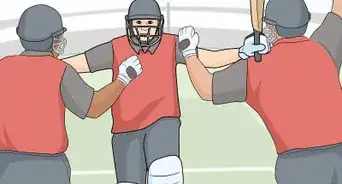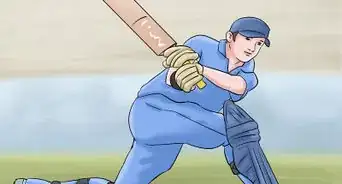This article was co-authored by wikiHow Staff. Our trained team of editors and researchers validate articles for accuracy and comprehensiveness. wikiHow's Content Management Team carefully monitors the work from our editorial staff to ensure that each article is backed by trusted research and meets our high quality standards.
wikiHow marks an article as reader-approved once it receives enough positive feedback. This article received 17 testimonials and 91% of readers who voted found it helpful, earning it our reader-approved status.
This article has been viewed 172,810 times.
Learn more...
A wicket-keeper is the player on the fielding team in the sport of cricket who stands behind the wicket, or stumps, behind the batter. As wicketkeeper, it’s your job to be ready to receive the ball and try to stump or run the batter out. Don’t let appearances deceive you—wicket-keepers actually need to be in a very high level of physical shape to perform their duties. In addition to that, wicketkeepers must constantly work on improving their catching technique. Finally, a truly good wicketkeeper needs to be a great team player and lead the fielding for their team. Be very sharp and alert also.
Steps
Catching Technique
-
1Keep your eyes on the ball. Watch the ball starting from the bowler’s hand and don’t take your eyes off it as it travels down the pitch. Try to envision catching it at different possible angles as it comes towards you.[1]
- Don’t worry if you make mistakes. Let them go and refocus yourself on every new ball.
Tip: Take a deep breath and concentrate on breathing calmly to relax between balls and help you refocus.
-
2Get in a strong, low position before each ball. Squat down with your weight on your toes and lean forward slightly with your hands on the ground. Face your palms forward towards the ball.[2]
- This will allow you to come up under the ball and receive it at any speed.
Advertisement -
3Rise up from the crouching position only as the ball bounces. You won’t know what the ball is going to do until it bounces. Stay down low until the ball bounces, then come up with it to catch it at the right height.[3]
- This will help you avoid missing balls that roll low along the ground instead of bouncing up higher.
-
4Lead with your head when diving. Drive your head towards the ball when you have to dive for it and keep your fingers pointing down. This will allow your eyes and brain to process the best way to catch the ball.[4]
- When you land after diving for a ball, straighten your elbow if it was a low catch. Bend your elbow, tuck it under your body, and roll for higher catches so you don’t land on your elbow.
- You can practice your diving technique on a mattress at home or on mats at cricket practice to get it down.
-
5Practice catching with drills. Use ramps that deflect balls at different angles and practice catching them at close range to improve your reaction times. Use tennis balls to make it even more difficult.[5]
- If you want to focus more on your reaction speed, then train with faster throws. If you want to focus more on your catching technique, then train with slower throws.
- You can incorporate these training drills into each cricket practice or into your personal training sessions as well if you have a partner to help you.
Team Skills
-
1Set the tempo for the fielding on your team. The wicketkeeper is the centerpiece of the fielding team. Make sure you keep ahead with the over rate, especially when you are playing T20 cricket where time is more of an issue.[6]
- T20 cricket is a variety in which each side only gets 1 innings of 20 overs. Matches typically last only about 3 hours.
-
2Work together with the bowler to prevent runs. Use your anticipation, concentration, and catching technique to stop runs when the bowler unintentionally makes a wild or wide delivery. Work together to prevent as many runs as you can and get your team in the lead.[7]
- Try to make the batter feel that even if the bowler delivers a poor throw, you will always be there to catch it. That way, they are more likely to swing for every delivery and make a mistake that lets you get them out.
-
3Help align the slip fielders on your team. The slips are the fielders behind the batsman on the offside of the field who are there to catch any balls beyond your reach. Decide if you need 2 or 3 slips, then help position them far enough away that you have room to dive and move but close enough that they will catch balls you cannot reach.[8]
- This will take some practice to get the hang of, but once you know what your limitations are you will be able to help the slip fielders get into the perfect alignment to provide the extra coverage you need.
-
4Encourage your teammates. Don’t let anything get you down, not even a dropped catch. Fielders mostly take after the wicketkeeper's reactions, so it's very important to always keep up your energy levels and cheer the team on.[9]
- This is especially important when your team is under pressure. As the center of the fielding team, you can influence everyone’s performance by staying positive and offering encouragement.
Tip: Avoid being too loud and aggressive behind the opposing team’s batter. It’s OK to make some noise to let them know you’re there, but focus on being positive towards your team and not trying to discourage the opposing team.
Fitness
-
1Do a mix of strength and cardio exercises to get in shape. Wicketkeepers need to have all around good strength, stamina, and agility. You need to incorporate a mix of things like running, weight training, and agility drills into your exercise routines to get in shape to be a good wicketkeeper.[10]
- Cricket games can go on for a really long time, so it’s important that you have the strength and endurance to last a whole match.
- The number of days you should train per week will depend on the level of cricket you are playing and how much time you have. In general, 3-4 personal training sessions a week is a good goal.
-
2Perform repetitive sprint training drills to build your stamina. Do something like 4-5 sets of 40 m (130 ft) sprints during every running session. Rest for short amounts of time, about 15 seconds, in between each sprint.[11]
- Wicketkeepers have to stand still while waiting for deliveries, then all of a sudden dive or jump for the ball. Doing cardio exercises like sprints helps replicate the sudden bursts of fast movement that you will need to use as a wicketkeeper.
- Do sprint training drills every personal training session that you do during the week.
-
3Alternate power exercises and strength training to build explosive strength. Do a set of something like regular squats or lunges followed by a set of box jumps or jump squats. Alternating these types of exercises will build your muscles and allow you to make explosive movements during cricket matches.[12]
- Wicketkeepers have to make the same kinds of repetitive explosive movements as boxers and tennis players, such as launching themselves long distances to catch a ball.
- Incorporate power exercises and strength training into each of your personal training sessions.
-
4Work on developing your core to help you dive and twist around. Do things like Russian twists, medicine ball throws, and other ab exercises to develop your core strength. This will allow you to perform rotation movements and dive with more ease.[13]
- Planks are another good exercise you can do to build your core stability.
- Work some core exercises into every personal training session that you do during the week.
Tip: Use an exercise ball to perform variations of ab exercises to engage even more stabilizer muscles in your core.
Community Q&A
-
QuestionHow can I become a good diving keeper?
 Community AnswerWork on your speed and agility to be a good diving keeper, and practice with a friend. Have your friend throw balls to your left and right to practice diving.
Community AnswerWork on your speed and agility to be a good diving keeper, and practice with a friend. Have your friend throw balls to your left and right to practice diving. -
QuestionAs a wicketkeeper, how can I gain energy?
 Community AnswerGet good rest and eat a well-balanced diet.
Community AnswerGet good rest and eat a well-balanced diet. -
QuestionHow do I catch a fast bowler's ball if I am standing in the position to catch a spinner's ball?
 Community AnswerThe best thing for a wicket keeper (or any close infielder) is that you must, on every ball, always anticipate that the ball will come through to you. Keep your eyes peeled on the ball.
Community AnswerThe best thing for a wicket keeper (or any close infielder) is that you must, on every ball, always anticipate that the ball will come through to you. Keep your eyes peeled on the ball.
References
- ↑ http://www.cricketlab.co/wicket-keeping-tips.html
- ↑ https://www.wisden.com/stories/your-game/cricket-coaching/improve-your-wicketkeeping-with-sarah-taylor
- ↑ https://www.wisden.com/stories/your-game/cricket-coaching/improve-your-wicketkeeping
- ↑ http://www.cricketlab.co/wicket-keeping-tips.html
- ↑ https://www.telegraph.co.uk/men/active/11698308/Jos-Buttler-10-things-you-didnt-know-about-wicket-keepers.html
- ↑ http://www.cricketlab.co/wicket-keeping-tips.html
- ↑ https://www.wisden.com/stories/your-game/cricket-coaching/improve-your-wicketkeeping-with-sarah-taylor
- ↑ http://www.cricketlab.co/wicket-keeping-tips.html
- ↑ http://www.cricketlab.co/wicket-keeping-tips.html
- ↑ https://www.telegraph.co.uk/men/active/11698308/Jos-Buttler-10-things-you-didnt-know-about-wicket-keepers.html
- ↑ https://www.telegraph.co.uk/men/active/11698308/Jos-Buttler-10-things-you-didnt-know-about-wicket-keepers.html
- ↑ https://www.telegraph.co.uk/men/active/11698308/Jos-Buttler-10-things-you-didnt-know-about-wicket-keepers.html
- ↑ https://www.telegraph.co.uk/men/active/11698308/Jos-Buttler-10-things-you-didnt-know-about-wicket-keepers.html
About This Article
Wicketkeepers are responsible for catching balls and stumping batters. To be a good wicketkeeper, you'll need to be in good shape! Do regular cardio exercises to increase your stamina, endurance, and agility. Also, try to do plenty of ab exercises to work on your core, as wicketkeepers dive and twist around a lot. Another important part of being a good wicketkeeper is improving your catching technique. Focus on the ball at all times, from when it leaves the bowler’s hand and travels down the pitch. Then, practice getting into a low, strong squat position before each ball so you can receive the ball at any speed! For more tips, like how to set the fielding tempo for your team, read on!
